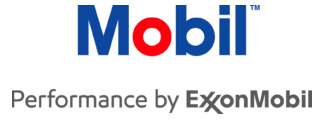According to the Manufacturers Alliance for Productivity and Innovation (MAPI), recent shifts in technologies, demographics, and markets have created a new normal for manufacturers. The good news is enterprises that adapt quickly will emerge more innovative and agile than their competitors. A report from the Arlington, VA-based Alliance (mapi.net) points to the following five disruptive changes setting the stage for this sector’s future. Entitled Manufacturing Megatrends, it summarizes findings from a recent survey of 81 senior executives and assesses the impact of these five factors on their businesses in 2015. Key takeaways and some associated survey findings include:
Information is the new currency.
With unparalleled access to information on pricing and profitability, customers have never been better informed on the total cost of ownership (TCO). To succeed, manufacturers need to create new forms of value and arm themselves with data showing the superiority of their solutions. According to MAPI’s report:
- Top-performing companies are eight times more likely to take a value-based approach toward pricing. Yet 60% of industrial companies don’t have a well-articulated pricing strategy.
- A TCO approach pays off. Industrial companies that measure and buy based on total cost of ownership are 35% more profitable.
The new workforce
The manufacturing workforce is aging and it’s harder than ever before to attract talent. Access to skilled labor had a negative impact on nearly two-thirds of responding executives’ operations in 2015. According to MAPI’s report:
- Companies with gender-diverse management teams outperform their peers’ EBITDA by 15%. Those with ethnically diverse management teams outperform peers EBITDA by 35%. Yet the STEM (science, technology, engineering, math) workforce is no more diverse today than it was 15 years ago.
- Women make up only 18% of the advanced-manufacturing workforce and African-American and Latino workers, combined, make up only 16%.
Globalized economic risks and opportunities
With 45% of U.S. manufacturing revenue generated overseas, exposure to currency fluctuations, volatile energy and commodity prices, global supply-chain disruptions, and regional economic uncertainty is at an all-time high. Economic and currency challenges took five of the top 10 spots on the survey’s list of factors having the most negative impact on businesses. According to MAPI’s report:
- Market opportunity already plays a significant role in manufacturing footprint decisions, but for nearly 50% of companies, it will be the critical decision factor by 2020. The availability of a strong local-talent pipeline is another crucial factor.
- The rise in political uncertainty has decreased GDP by $150 billion and employment by 1.1 million. If uncertainty returned to 2007 levels, capital investment would jump 1.5%.
Technology’s promise and peril
Amazing opportunities offered by the Internet of Things, 3D printing, cloud, and other digital technologies also open a Pandora’s box of risks. According to MAPI’s report:
- While 83% of manufacturers have or are in the process of developing a “bring your own device” policy, 80% are concerned about data-loss protection.
- More than half of responding executives said it’s unlikely or highly unlikely they could detect a sophisticated cyber attack, despite the average breach costing nearly $4 million.
Regulatory labyrinths
Ever-changing requirements make it increasingly difficult and costly for manufacturers to succeed globally, and force them to reallocate resources to address burdensome regulations. According to MAPI’s report:
- Between 1981 and 2012, more than 2,000 regulations directly affecting manufacturers were issued. The annual cost of complying with merely the major ones? $726 billion.
- Manufacturers predict that within five years regulatory and tax concerns will have twice the impact on footprint decisions, compared with today. MT
To learn more about MAPI and to download a copy of its recent Manufacturing Megatrends Report, visit mapi.net.




